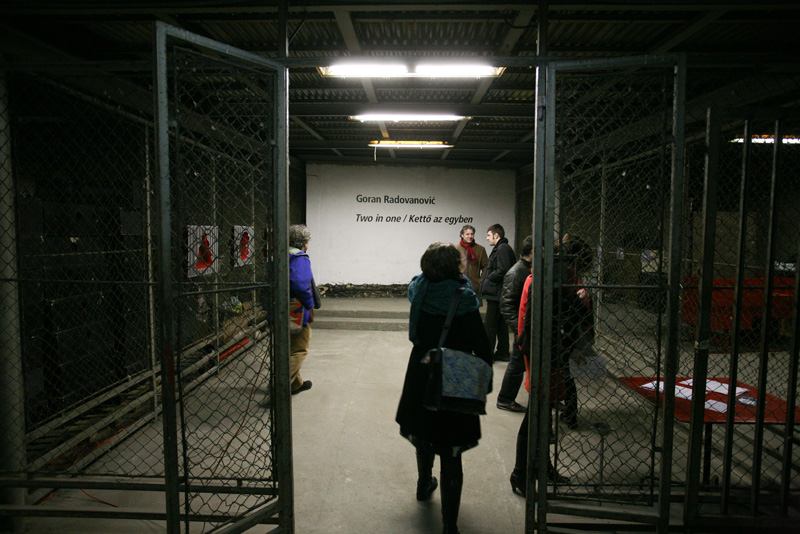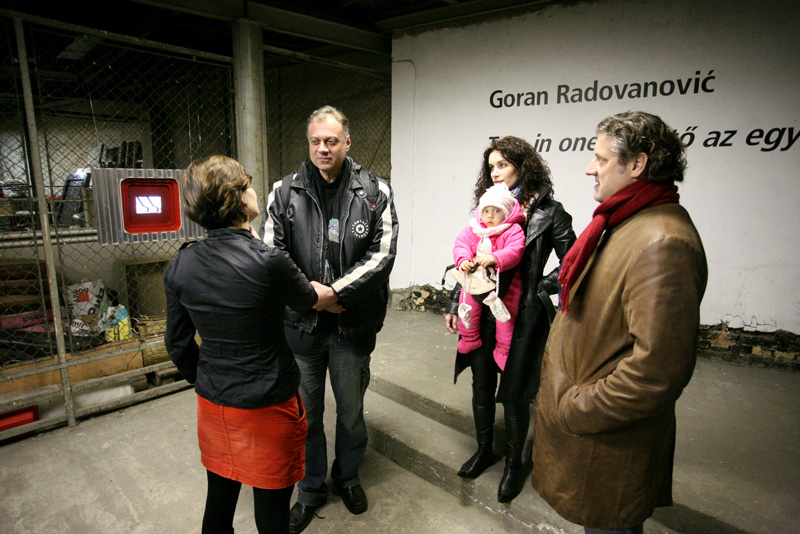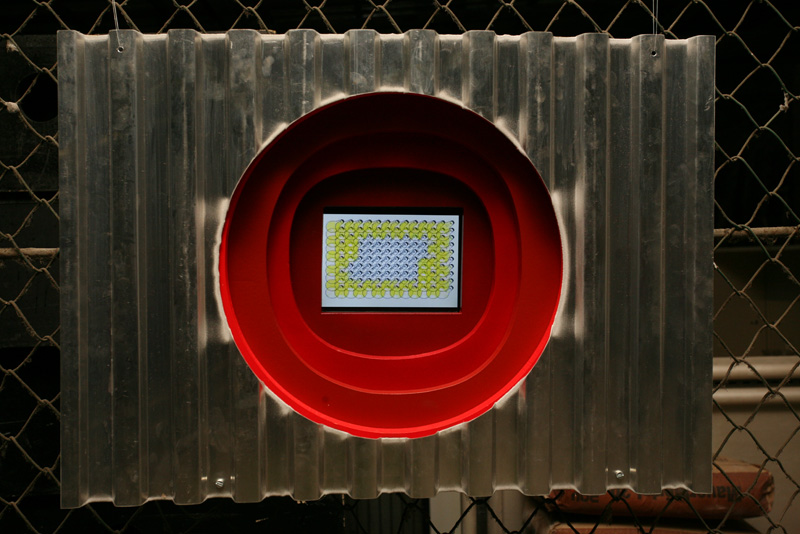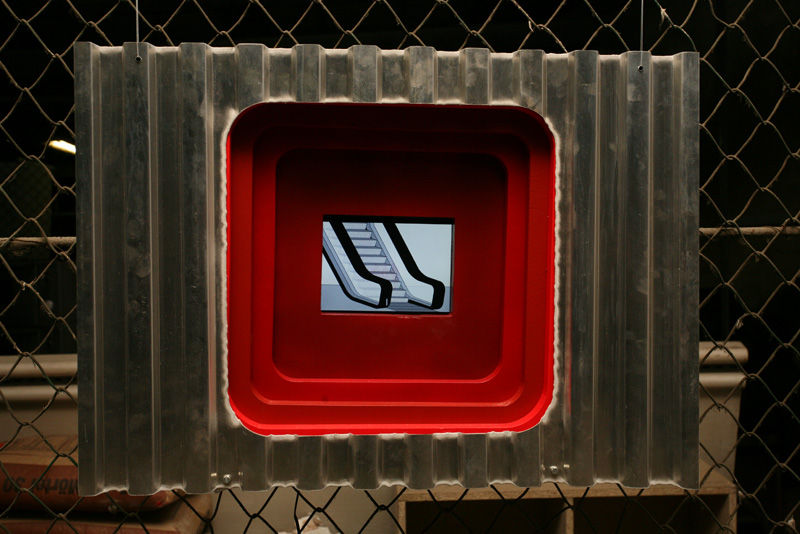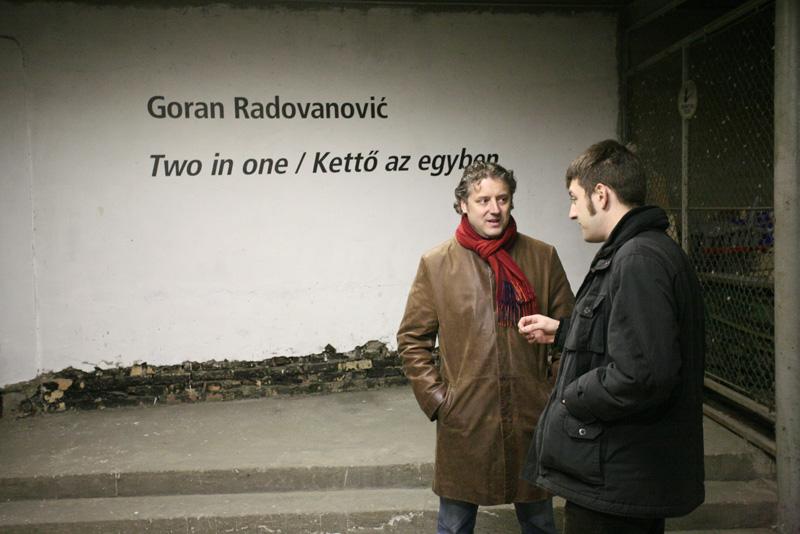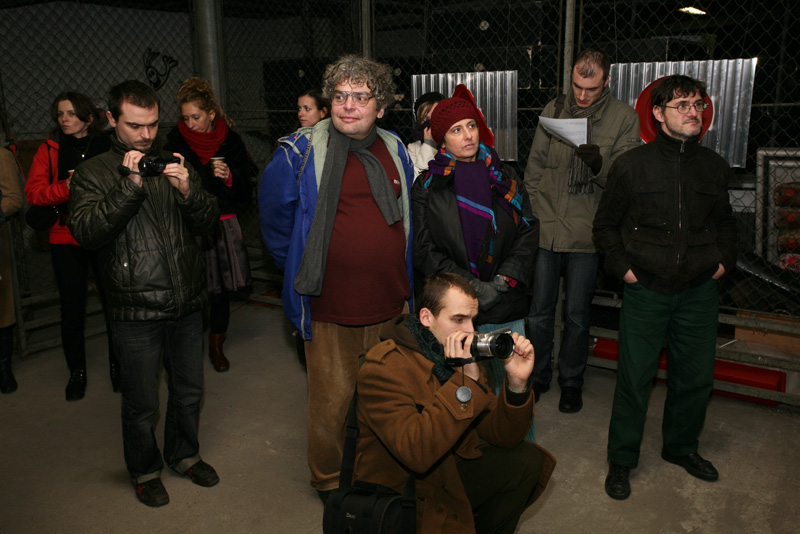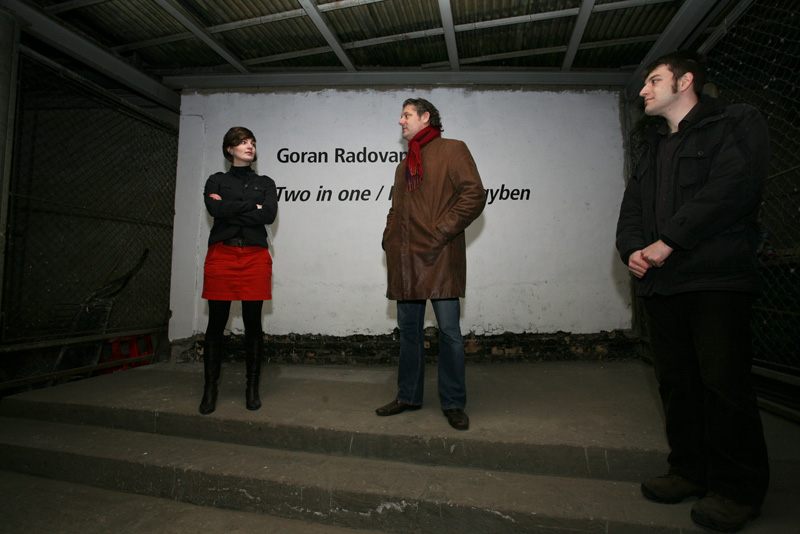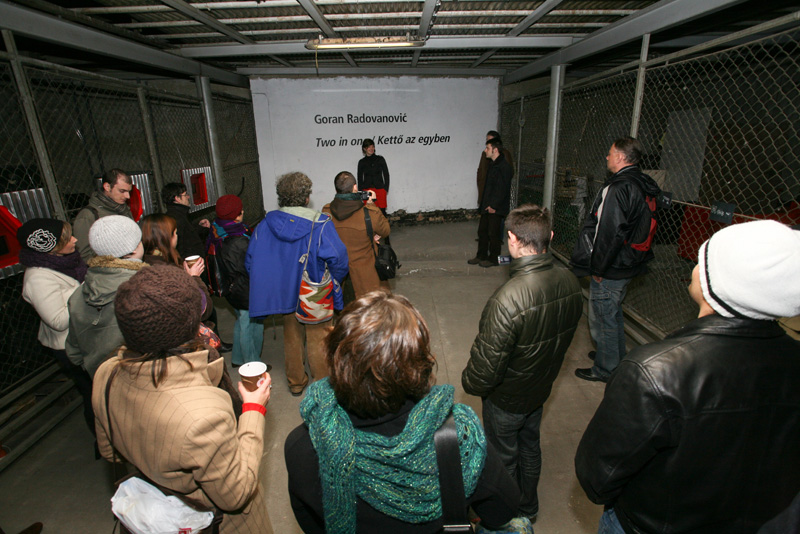2 in 1 by Goran Radovanović
Corvintető, Budapest , 2008
Goran Radovanović’s videoinstallation consists of three micro narrations all connected to the history of the building, illustrating significant moments in Corvin history, the first escalator, the first city square with street lights and the first moving commercial, that are now usual thing for every big department store. They are hidden under the facade, and you have to dig or make a hole to come to those forgotten stories.
Goran Radovanović is the guest in Budapest of residential art program Opening the Closed Shops, in cooperation with the Akademie Solitude, Stuttgart, the ACAX | Agency for Contemporary Art Exchange and the Attila József Circle.
« While post transitioning societies tend to rush with erasing symbols that relate them to their most recent history (on purpose or inadvertently), the question imposes should everything be forgotten, some symbols and objects are burned deeply in our collective unconscious, but we don’t know what to do with them how to reanimate them and reaffirm their values, in order for them to become the statement about our recent history and also incorporate them in the wasp body of our own and global popular culture. Corvin department store in the center of Budapest is an example of what is close but far away, every citizen of Budapest is familiar with this building, and more or less with it’s past, but very few seek for the answer how can it fit in the present and future of the city.
The aluminum curtain is serving as an envelope for the old facade trapped beneath it, and also as a canvas for billboards and advertisements that are pasted on its surface. So between these two purposes it has very little space to “express itself” as a vital part Budapest identity. It has trapped the past and lies under the present, so where is it, what time does it belong to, or better to ask, what time in Budapest’s collective conscience does it fit, past present or future?
The goal of the project is to try to transform the facade, to use it’s visual elements in creating new forms and also to express it’s value and uniqueness, if more people start looking at the facade as integral part of the Budapest, maybe the will to preserve this facade as an landmark and to protect it by law like it’s very close “friend” the original façade will appear too, maybe society will gain the awareness of both layers of the history, and start respecting them equally.
As the façade was once presented as a redesign of the facade of Isvan Batka back in 1966, maybe now it is time to reanimate it by redesigning and transforming it again, even symbolically, using it’s aesthetics for posters, package designs, prints, interior and much more. It is a way for a façade to achieve its maximum potential to become a brand itself. »
